Hormone receptive breast cancer is on the rise. But knowledge is a form of power. It takes understanding the factors that influence breast cancer and look into hormone cancer insights that can help you make informed choices about your hormone health.

Table of Contents
💖 Hormones And Cancer
Breast cancer is a journey no one expects to take, but it's a reality for far too many. With over 2 million new cases diagnosed worldwide each year, breast cancer has touched the lives of countless women and their loved ones. The fear, uncertainty, and overwhelming nature of such a diagnosis can leave anyone feeling powerless.
One of the most significant aspects of breast cancer risk is hormone health. Hormones, especially estrogen, play a significant role in how breast tissue develops and behaves.
When these hormones are out of balance, it can influence the risk of developing hormone-receptor-positive breast cancer.
This article aims to explore the critical connection between hormones and breast cancer, helping you better understand how supporting balanced hormone health can be a powerful step in breast and hormone cancer prevention.
⁉️ Understanding Breast Cancer
Breast and hormone cancer isn't a one-size-fits-all disease. In fact, there are several different types, each with its own characteristics and behavior.
The most common types include hormone receptor-positive breast cancer, HER2-positive breast cancer, and triple-negative breast cancer.
1. Hormone Receptor-Positive Breast Cancer
Fueled by hormones like estrogen or progesterone. In this hormone receptive breast cancer type, cancer cells have receptors that attach to these hormones, helping the cancer grow.
2. HER2-Positive Breast Cancer
This type doesn't have receptors for estrogen, progesterone, or HER2. It's often more aggressive and harder to treat, as it doesn't respond to hormonal therapies.
While anyone can develop breast and hormone cancer, certain risk factors increase the likelihood of diagnosis.
These factors include genetics, lifestyle factors, environmental exposures, and age. Although some of these risk factors are beyond our control, many are influenced by the choices we make in daily life.
However, regardless of risk factors, the importance of early detection cannot be overstated.
Regular breast self-exams, mammograms, and screenings increase the likelihood of catching cancer early, when it's most treatable.
Early detection not only improves survival rates, but also reduces the intensity of treatments required.
By staying proactive with screenings, we empower ourselves to face breast and hormone cancer with preparedness, not fear.

💖 The Role of Hormones In Breast Health
Three key hormones-estrogen, progesterone, and testosterone-each have specific jobs that influence breast tissue throughout a woman's life.
By understanding the role in hormones and breast health, we can better educate on the risks of developing hormone receptive breast cancer.
1. Estrogen
The primary hormone responsible for the development of breast tissue. During puberty, it helps breasts grow and mature.
Estrogen continues to support breast tissue by regulating cell growth and maintenance throughout a woman's reproductive years.
2. Progesterone
Progesterone works alongside estrogen to maintain a healthy balance in breast tissue. This hormone supports the normal growth of milk glands and helps regulates estrogen's effects on breast cells.
Progesterone is particularly important during the menstrual cycle, as it ensures that the breast tissue doesn't grow uncontrollably.
3. Testosterone
Often thought of as a "male" hormone, testosterone is present in women in smaller amounts. It helps balance the effects of estrogen in breast tissue.
When testosterone levels are too low, estrogen's influence may dominate, which could increase the risk of breast tissue abnormalities.
These hormones don't just operate in isolation, though-they interact in complex ways to maintain the structure and function of breast cells.
When in balance, these hormones help regulate healthy breast cell growth, repair damaged cells, and support overall breast health.
However, when this delicate balance is thrown off, the risks increase.
Hormonal Imbalances & Breast Hormone Cancer
Hormonal imbalances occur when there is too much or too little of a particular hormone in the body, disrupting the balance required for optimal health.
Estrogen dominance is one of the most common hormonal imbalances linked to breast and hormone cancer.
This occurs when there is an excess of estrogen relative to progesterone in the body. Estrogen is a powerful hormone that stimulates breast cell growth.
When it is present in high amounts for extended periods, it can fuel the growth of abnormal cells, which may become cancerous over time.
Prolonged exposure to elevated estrogen levels-through factors such as early menstruation, late menopause, or even environmental toxins-has been shown to increase the risk of hormone-receptor-positive breast and hormone cancer.
Several signs can indicate that you might be experiencing a hormonal imbalance, particularly involving estrogen dominance.
- Irregular Menstrual Cycles - When periods become unpredictable, heavier, or more painful than usual, it may be a sign of estrogen dominance or other hormonal imbalances.
- Weight Fluctuations - Unexplained weight gain, especially around the abdomen, can signal an imbalance in estrogen or other hormones like cortisol.
- Mood Swings, Anxiety, or Depression - Emotional instability, mood swings, or persistent feelings of anxiety and depression can be linked to fluctuations in estrogen and progesterone levels.
- Fatigue and Sleep Disturbances - Difficulty falling or staying asleep, as well as chronic fatigue, may result from hormonal imbalances that affect sleep-regulating hormones and stress levels.
Balancing estrogen through diet, lifestyle, and medical interventions, when necessary, can be a powerful tool in protecting breast health. Let's discuss these tools in more detail!
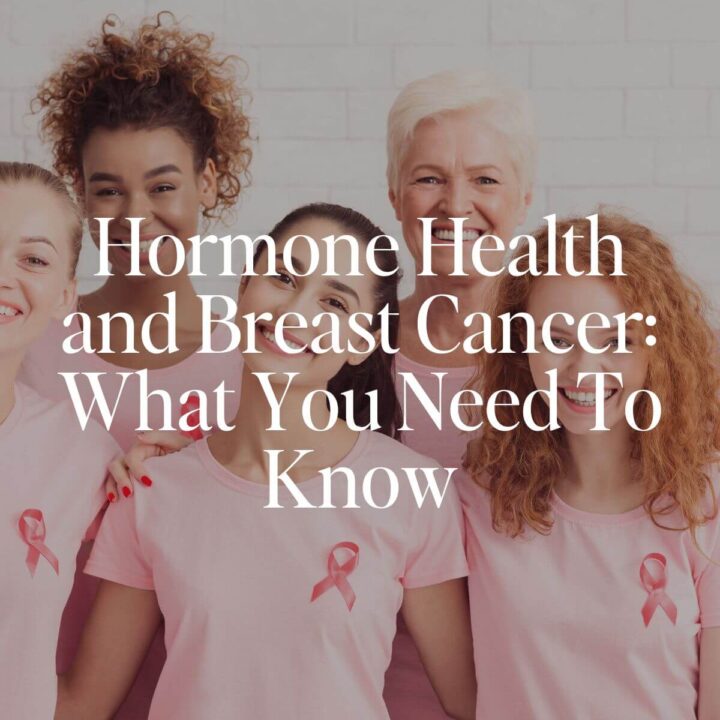
🧡 Supporting Hormonal Balance For Breast Health
Although the rates of breast and hormone cancer are rising, the good news is there are many natural methods to help regulate hormones, improve well-being, and minimize the effects of hormone imbalances.
1. Nutrition
A hormone-supportive diet is key to maintaining balance and reducing breast and hormone cancer risk.
Fiber-rich foods like whole grains, fruits, and vegetables help the body eliminate excess estrogen through healthy digestion, while cruciferous vegetables such as broccoli and kale support estrogen metabolism by aiding the liver in breaking down and removing it.
📥 GET THIS RECIPE IN YOUR INBOX 📥
Incorporating anti-inflammatory foods like fatty fish, nuts, seeds, and leafy greens can further reduce inflammation, which is linked to hormonal imbalances and hormone cancer risk.
2. Detoxification
The liver plays a crucial role in processing and metabolizing hormones, particularly estrogen, making liver support vital for maintaining healthy estrogen levels.
Foods rich in sulfur, like garlic and onions, and antioxidants, such as berries and green tea, enhance liver detoxification.
Staying hydrated and consuming adequate fiber helps flush out toxins and excess hormones, while avoiding processed foods, alcohol, and caffeine reduces the liver's burden, further promoting optimal hormone balance.
3. Exercise
Regular physical activity is one of the most effective ways to regulate hormones. Strength training and moderate cardio can lower excess estrogen levels by reducing body fat, as fat cells produce estrogen.
These forms of exercise also boost metabolism and improve insulin sensitivity, which helps balance other hormones like cortisol and insulin.
Exercise releases endorphins, which counteract the negative effects of stress hormones, creating a balanced hormonal environment in the body.
4. Stress Management
Chronic stress can lead to elevated levels of cortisol, the stress hormone. High cortisol disrupts the balance of other hormones, including estrogen and progesterone, contributing to hormonal imbalances.
Incorporating stress-reducing activities like meditation, yoga, deep breathing exercises, and spending time in nature can lower cortisol levels and support overall hormone health.
Adequate sleep is also vital for hormone regulation, as sleep disturbances can exacerbate stress and hormonal imbalances.
5. Reduce Exposure to Environmental Toxins
Environmental toxins, or xenoestrogens, mimic estrogen and disrupt hormonal balance, contributing to estrogen dominance. These chemicals are prevalent in plastics (BPA), pesticides, personal care products, and household cleaners.
To support hormonal health and lower breast and hormone cancer risk, avoid plastic containers in favor of glass or stainless steel, choose organic produce to minimize pesticide exposure, and opt for natural personal care products free from harmful chemicals like parabens and phthalates.

One powerful, proactive step you can take is incorporating self-massage into your routine. Here's a guide on how to perform self-massage and other essential tips for breast and hormone cancer prevention.
- Find a Comfortable Position - Start by sitting or lying in a comfortable position. Ensure you're relaxed and in a quiet space.
- Use Gentle Pressure - Use the pads of your fingers to gently massage your breast tissue. Apply light pressure, and avoid using your fingertips, as this can be too harsh.
- Circular Motions - Begin at the outer edge of the breast and move in small, circular motions towards the center. This technique helps stimulate circulation and can aid in detecting any unusual lumps or changes.
- Vertical Strokes - Another effective method is to use vertical strokes from the top of your breast to the bottom. This technique ensures that you cover the entire breast area systematically.
- Don't Forget the Armpit Area - The lymph nodes in your armpit area are also important. Gently massage this area with a light, circular motion.
- Regular Routine - Aim to perform self-massage once a month. Consistency helps you become familiar with your body and more aware of any changes.
Top Tips For Breast & Hormone Cancer Prevention
- Healthy Diet - Incorporate a diet rich in fruits, vegetables, whole grains, and lean proteins. Foods high in antioxidants and fiber, like berries and leafy greens, can help support overall health and keep hormones in check.
- Regular Exercise - Aim for at least 150 minutes of moderate exercise or 75 minutes of vigorous activity each week. Regular physical activity not only helps maintain a healthy weight and supports balanced hormones, but also boosts mood. Just remember, you'll feel amazing after!
- Limit Alcohol Consumption - Studies suggest excessive alcohol consumption can increase breast and hormone cancer risk. Try to limit your intake to no more than one drink per day.
- Avoid Smoking - Smoking is associated with various health risks, including an increased risk of breast and hormone cancer. Quitting smoking is one of the best things you can do for your overall health.
- Regular Screenings - Schedule regular mammograms and clinical breast exams as recommended by your healthcare provider. Early detection is crucial for effective treatment.
- Know Your Family History - If you have a family history of breast cancer, discuss genetic testing and preventive measures with your healthcare provider.
- Maintain a Healthy Weight - Obesity is a risk factor for breast cancer, so maintaining a healthy weight through balanced nutrition and regular exercise is essential.
⁉️Have You Ever Heard of DIM?
Diindolylmethane (DIM for short) is a compound found in cruciferous vegetables like broccoli, cabbage, Brussels sprouts, cauliflower, and kale.
It's gaining attention fast for its potential benefits in supporting hormone health.
Here are four key advantages of incorporating natural food sources of DIM into your wellness routine.
- Promotes Hormonal Balance - DIM helps balance estrogen levels by supporting the body's ability to metabolize estrogen into its less potent forms. This can be beneficial for those experiencing estrogen dominance.
- Supports Detoxification - DIM helps detoxify the liver by enhancing its ability to break down and eliminate excess hormones and toxins, which can help maintain hormonal balance.
- Reduces Symptoms of PMS - By supporting estrogen metabolism, DIM may help alleviate common PMS symptoms, such as mood swings, bloating, and irritability.
- May Aid in Hormone-Related Acne - Hormonal imbalances are often linked to acne. DIM's role in regulating estrogen levels can help improve skin health and reduce hormone-related breakouts.
So let's try adding some natural food sources of DIM this week.
Here are some healthy recipes from my website that contain natural food sources of DIM.
- Sheet Pan Chicken & Brussels Sprouts With Maple Dijon Mustard Sauce
- Broccoli Rabe With Garlic
- Creamy Broccoli Au Gratin
- Sesame Garlic Beef With Broccoli
- Cauliflower Fried Rice With Pork Stir Fry
- Gluten-Free Crustless Broccoli Quiche Bites
- Ginger Garlic Cabbage Saute
- Gut Friendly Massaged Kale Salad
- Bang Bang Cauliflower "Wings"
Are you looking to implement lifestyle changes that support breast and hormone cancer prevention or improve your hormone health?
Don't navigate this journey alone. I'm here to guide you every step of the way!
Support Hormone Health
The connection between hormone health and breast cancer is clear-hormonal imbalances, especially estrogen dominance, can significantly increase the risk of developing breast cancer.
While some risk factors, such as genetics or age, are out of our control, there are many proactive steps we can take to support hormonal balance and reduce the risk of breast and hormone cancer.
Ready to take control of your hormone health and protect your well-being?
I'm here to help! Let's work together to uncover what's going on with your hormones and develop a plan to support your body's balance.
Let's educate to help reduce one's risk of developing hormone receptive breast cancer.

🗣️ Let's Discuss The Connection Between Hormone Health And Breast Cancer Link
So, have you been surprised by hearing of the connection between hormone health and breast cancer? Let me know your personal experience below?
You can also connect with me @EatYourNutrition on Instagram. I love seeing your photos. #EatYourNutrition #LauraVillanueva
Additional Resources
Also, consider exploring the following resources for further reading and guidance on better hormone health.
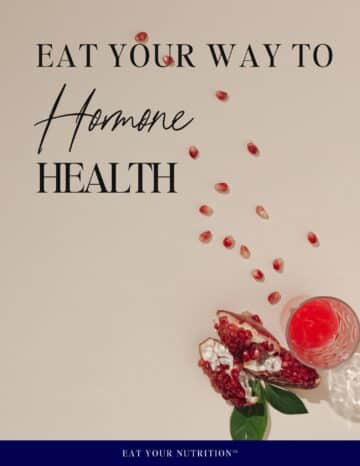
- Free Guide - Many people don't understand the importance of a healthy diet. This Eat Your Way to Hormone Health Guide is your resource to better hormonal balance. Join the free newsletter today, and as a free gift, download this guide.
- Meal Plan - If you need more help with better hormonal health, then you might want a simple recipe guide and anti-inflammatory diet meal plan packed with the key to help ditch inflammation and reset the body. So, if you have chronic inflammation issues, try this anti-inflammatory meal plan and recipes inside the Anti-Inflammatory Diet Meal Plan and Recipe Guide.
- Need Extra Support - Join my Balanced Hormones - Program. Register here to join the program from a gut and hormone health nutritionist.
- Group Support - Join my Featured Nutrition Challenge. All seasonal nutrition challenges come with a meal plan, recipe guide, grocery shopping list, and a seasonal featured nutrition theme.











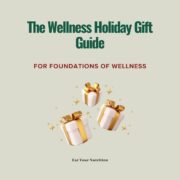


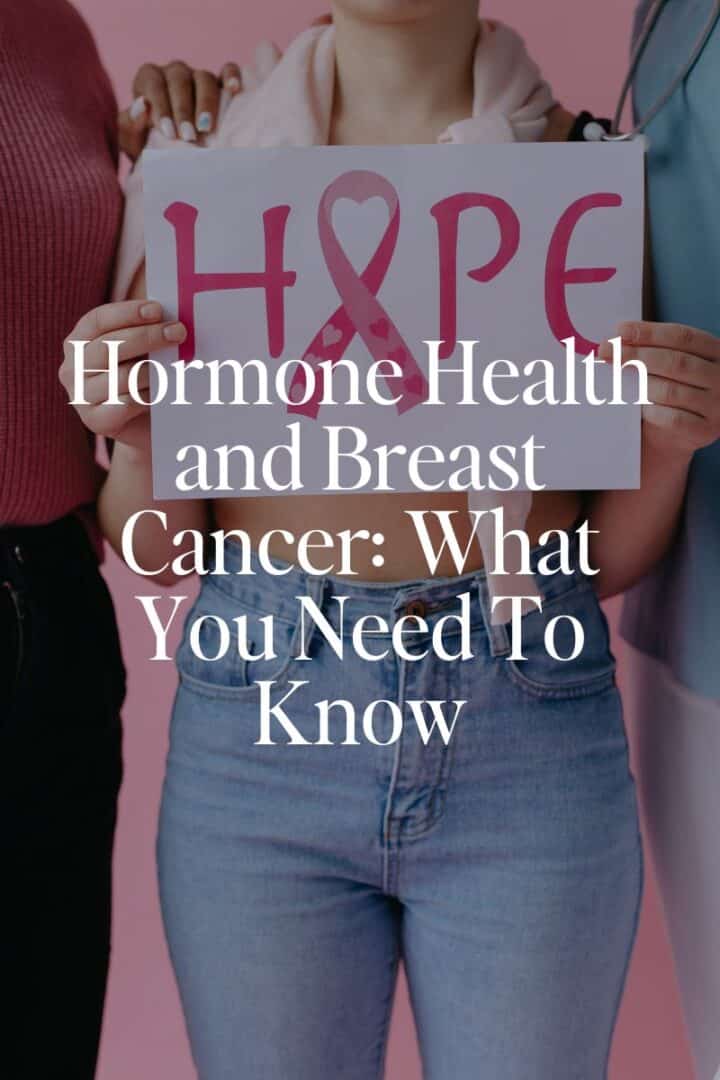

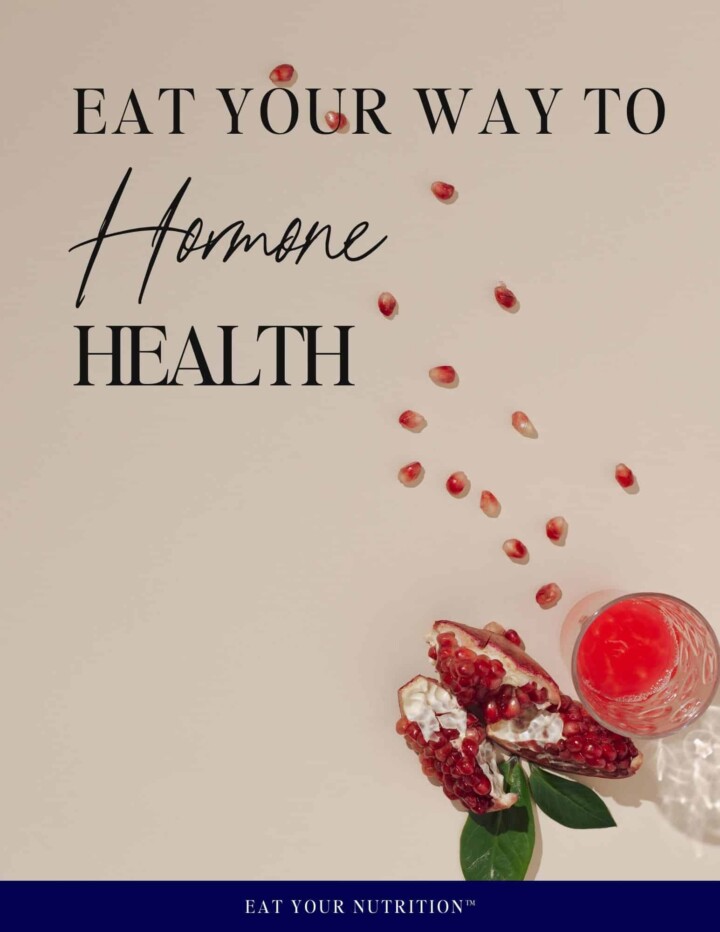



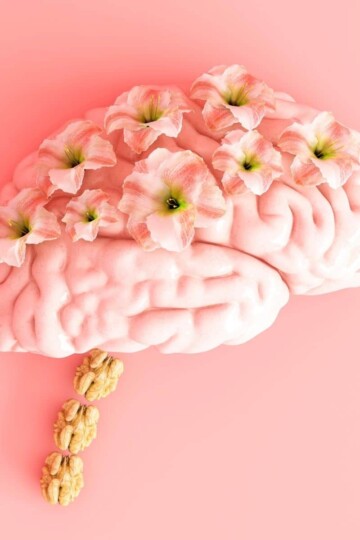

Comments
No Comments